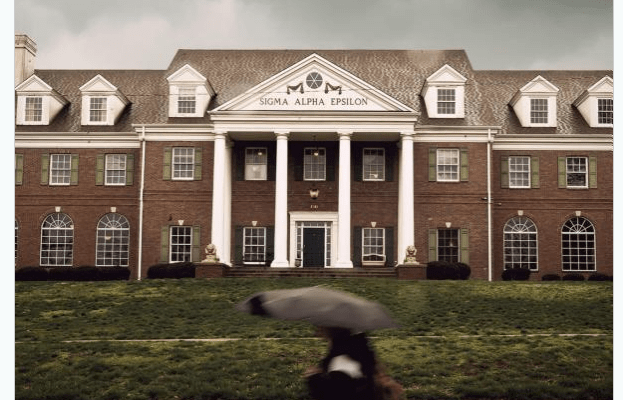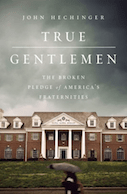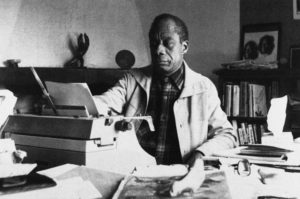True Gentlemen
A new book provides a blistering inside look at America's fraternities. PublicAffairs
PublicAffairs
“True Gentlemen: The Broken Pledge of America’s Fraternities”

Purchase in the Truthdig Bazaar
A book by John Hechinger
On Nov. 19, 2014, Rolling Stone published an epic account of a drunken gang rape inside a University of Virginia fraternity house. The story initially caused a sensation because readers found credibility in its familiar narrative, seemingly drawn from a prime-time drama plot line: good-looking frat boys gone bad.
But it wasn’t true—and the story was later retracted. That the magazine’s reputation suffered when the article unraveled proved vindicating to members of the fraternity, Phi Kappa Psi, who later sued the magazine for defamation and won a $1.65 million settlement. Struggling in a tough industry, Rolling Stone owner Jann Wenner has since announced the sale of his controlling share of the publication.
In the end, Rolling Stone’s failure allowed fraternities across the country to call into question any scrutiny of their actions.
For a time, at least. Now comes John Hechinger and his book “True Gentlemen: The Broken Pledge of America’s Fraternities,” a blistering inside look at the traditional Greek system through the lens of a single brotherhood: Sigma Alpha Epsilon (SAE), a fraternity with 215 chapters on campuses across the country.
Click here to read long excerpts from “True Gentlemen” at Google Books.
The book comes at a turbulent moment for fraternities nationwide. News accounts of alcohol-related deaths linked to pledge hazing at Penn State and Louisiana State universities have Greek organizations on the defensive. Sexual assaults that occurred in fraternity houses are currently under investigation at Auburn University, Indiana University and the University of Mississippi.
Hechinger, a senior editor at Bloomberg News, has delivered a deeply researched account that traces SAE from its roots to today—and offers a kind of book of revelation. I found myself dividing Hechinger’s story into four parts, like the horsemen of the Bible’s final book.
In the first part, about death, Hechinger outlines SAE’s tragic record as America’s deadliest fraternity, with 10 deaths tied to SAE between 2005 and 2013, most a result of rampant alcohol abuse, including the alcohol poisoning of George Desdunes, a Cornell University student who was found lying on a couch after a night of hazing with a zip tie around his ankle and no pulse. Desdunes’ blood alcohol level was .40, five times the legal limit for driving.
The second, about famine, describes a starvation of moral principles within the fraternity, particularly related to race, an issue that has plagued SAE since its founding by a Confederate chaplain more than 160 years ago and that exploded into the open in 2015 when brothers at the University of Oklahoma were filmed disparaging blacks using the n-word.
The third part, about war, portrays the fraternity’s internecine struggles for reforms, including two failed bids to ban alcohol from SAE houses and one desperate campaign to tamp down on hazing that ultimately led to the fraternity ending pledging in 2014. Instead, initiates are welcomed through what the fraternity describes as a “holistic education” called the True Gentleman Experience that “fosters both personal and professional development.”
And finally: conquest. Here is how Hechinger details one young woman’s experience inside an SAE house in the fall of 2014 at Johns Hopkins University in Baltimore, where she found herself on a dingy bathroom floor littered with beer cans. “The man pushed her head down and forced her to perform oral sex and, then, intercourse, leaving her raw and bleeding inside. But it wasn’t over yet,” Hechinger writes, continuing the account using the woman’s real name with her permission. “The second man took his turn, forcing Gabriela to perform fellatio.” The encounter ended with a third man entering the bathroom and finding the young woman helpless, Hechinger writes. A savior he was not. “Gabriela was slumped on the floor of the shower, leaning against a wall, her leggings stained with semen, her shirt pulled up over her shoulders,” Hechinger writes. “‘Button up your shirt,’ he told her. Afterward, he urinated and left her on the floor, scared and alone.”
Interestingly, the men who assaulted Gabriela were not members of the fraternity, Hechinger notes, questioning whether SAE acted negligently in allowing conditions for such a brutal attack to transpire amid a party at an SAE house.
Hechinger writes that between 2011 and 2016, sexual assaults took place at 15 SAE houses out of 230 across the country. Insurance companies, Hechinger notes, “have rated fraternities just above toxic-waste dumps because of claims related to drinking, hazing, and sexual assault.”
To fraternity men, however, the focus on the Greek system to address sexual assault and other misdeeds is misplaced. “The chess club doesn’t have to go to sexual assault training,” Parks Giffin, a prominent SAE alumnus and Republican political booster, told Hechinger. “The chess club doesn’t have to go to a class about alcohol. The university is saying ‘you fraternity guys are the problem.’ It stigmatizes them.”
Not all of the book is bad news. SAE chapters, like fraternities everywhere, can be forces for good. The book’s title is a nod to the SAE creed, which calls for brothers to stress “propriety, self-control, frankness, sincerity, sympathy, humility, and respect for the rights and feelings of others.” Fraternities take part in massive volunteer efforts, raise $20 million for charity annually and help foster bonds between young men that can form powerful professional networks. But Hechinger’s instincts are right on when he writes that “few American institutions face as wide a chasm between high-minded ideals and on-the-ground reality as the college fraternity.”
Hechinger casts his inquiry into that space in between. Fraternities are sprawling entities controlling $3 billion in real estate assets on 800 campuses. They are powerful, too, with alumni reaching into corner offices on Wall Street, the halls of Congress and the White House. Forty percent of U.S. presidents have belonged to fraternities, including William McKinley, who was in SAE. Other prominent SAE members include Southern gothic author William Faulkner, billionaire T. Boone Pickens, and Goldman Sachs chief executive and former U.S. Treasury Secretary Henry Paulson.
Hechinger could have chosen just about any fraternity for his subject, but he chose well with SAE. It is one of the oldest fraternities in the country and one of the largest, with a peak of 15,000 undergraduate members in 2015.
From a storytelling perspective, Hechinger benefited from some of SAE’s truly incredible escapades. Let’s not forget that in 1991, the SAE chapter president at the University of Houston bit off the tip of a woman’s pinkie finger–she sued and was awarded $440,000—or that the Alabama chapter was suspended in the 1990s after the police discovered that the house was the inner sanctum of an Escobar-caliber cocaine trafficking ring (an episode Hechinger notably left out).
And the tales of hazing are plentiful and horrifying. Hechinger dutifully notes that at the Princeton SAE chapter, pledges had to glug 20-ounce bottles of tobacco spit and be subjected to whipping and being bitten during a foray to a gentlemen’s—ahem—strip club. At another Ivy League chapter, Hechinger writes, the pledges at Dartmouth “were forced to swim in a kiddie pool full of vomit, urine, feces, semen, and rotted food.” A former pledge there wrote a column for the student paper saying that initiation required students to “drink beers poured down fellow pledges’ a– cracks.”
The most consequential aspect of Hechinger’s investigation of SAE concerns its struggle to address race within its membership. It also presents one of the book’s rare weaknesses. Hechinger admirably holds SAE accountable for its dismal record in recruiting minorities. But it is solely within that narrow scope that he examines the issue of race at all. Unfortunately for readers, this is a book only about traditionally white fraternities. But what Hechinger finds is stark and stunning. SAE’s governing laws once dictated that potential members be from “the Aryan race” and explicitly declared ineligible any man “either of whose parents is a full-blooded Jew.”
A 2013 survey by SAE found that only 3 percent of its members were black. That was before a group of students at the University of Oklahoma was filmed singing a song using the n-word to the cheerful tune of “If You’re Happy and You Know It.” The nine-second clip damaged SAE’s reputation. But the most striking admission, from SAE members themselves, is that the video did not, and probably will not, lead to any significant changes at the fraternity, especially at its chapters in the South.
In the aftermath of the Rolling Stone debacle, journalist Sabrina Rubin Erdely said in court testimony that she had regrets about her reporting. She had spent five months on the story but did not vet her sources well enough, and she admitted that her endeavor into fraternity misdeeds went awry.
In the meantime, thankfully, Hechinger wrote the new testament.
Rees Shapiro is an education reporter at The Washington Post.
©2017 The Washington Post
Your support matters…Independent journalism is under threat and overshadowed by heavily funded mainstream media.
You can help level the playing field. Become a member.
Your tax-deductible contribution keeps us digging beneath the headlines to give you thought-provoking, investigative reporting and analysis that unearths what's really happening- without compromise.
Give today to support our courageous, independent journalists.






You need to be a supporter to comment.
There are currently no responses to this article.
Be the first to respond.